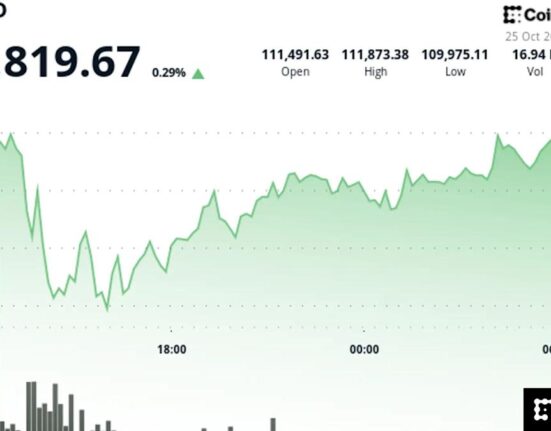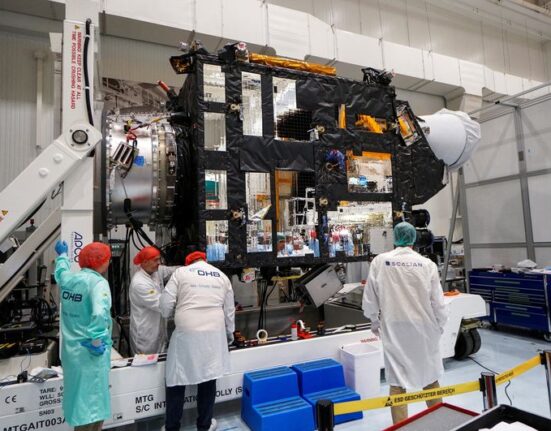Intel (INTC) reported its third-quarter earnings on Thursday, Oct. 23. The beaten-down chip maker brought in a new CEO, Lip-Bu Tan, earlier in the year to help it regain lost ground in a market now dominated by Nvidia (NVDA), Advanced Micro Devices (AMD), and Taiwan Semi (TSM).
It seems the turnaround is starting to pay off. Intel’s shares have soared 101.9% year-to-date, compared to the S&P 500 Index ($SPX) gain of 14.6%.
Let’s dig into the quarterly results to see where Intel stands today and whether 2026 could be a rebound year for the company.
As Intel navigates the AI-driven computing era, Q3 numbers indicated not only a recovery, but also increased momentum in both its core and expanding businesses. In the third quarter, revenue of $13.7 billion beat Wall Street’s forecast by $515 million. Revenue also increased by 3% year-over-year and 6% sequentially. The growth was fueled by strong customer demand, efficient inventory management, and improved supply chain dynamics.
Intel’s Data Center and AI Group (DCAI) reported $4.1 billion in revenue, up 5% sequentially, driven by demand for AI servers, storage, compute, and host CPUs. Management is “cautiously optimistic” about continued CPU growth into 2026. The expanding AI infrastructure build-out is prompting some data center operators to look at long-term strategic supply arrangements that can support sustained CPU demand.
Intel Foundry generated $4.2 billion in revenue, down 4% sequentially, but performance exceeded expectations for Intel 10 and Intel 7 nodes. The long-term outlook for Intel Foundry remains highly positive. CFO David Zinsner emphasized forecasts of a tenfold rise in AI data center capacity (measured in gigawatts) by 2030, resulting in significant demand for wafers and packaging services. As one of the few companies with leading-edge manufacturing capabilities on U.S. soil, Intel is uniquely positioned to capitalize on this surge.
One of the most significant developments in the quarter was Intel’s growing cooperation with Nvidia. The two businesses are collaborating to integrate Intel’s x86 processors with Nvidia’s NVLink technology. The Client Computing Group (CCG) generated $8.5 billion in revenue, boosted by seasonal tailwinds, a healthier pricing mix, and the introduction of Intel’s latest Lunar Lake and Arrow Lake processors.
Intel (INTC) reported its third-quarter earnings on Thursday, Oct. 23. The beaten-down chip maker brought in a new CEO, Lip-Bu Tan, earlier in the year to help it regain lost ground in a market now dominated by Nvidia (NVDA), Advanced Micro Devices (AMD), and Taiwan Semi (TSM).
It seems the turnaround is starting to pay off. Intel’s shares have soared 101.9% year-to-date, compared to the S&P 500 Index ($SPX) gain of 14.6%.
Let’s dig into the quarterly results to see where Intel stands today and whether 2026 could be a rebound year for the company.
As Intel navigates the AI-driven computing era, Q3 numbers indicated not only a recovery, but also increased momentum in both its core and expanding businesses. In the third quarter, revenue of $13.7 billion beat Wall Street’s forecast by $515 million. Revenue also increased by 3% year-over-year and 6% sequentially. The growth was fueled by strong customer demand, efficient inventory management, and improved supply chain dynamics.
Intel’s Data Center and AI Group (DCAI) reported $4.1 billion in revenue, up 5% sequentially, driven by demand for AI servers, storage, compute, and host CPUs. Management is “cautiously optimistic” about continued CPU growth into 2026. The expanding AI infrastructure build-out is prompting some data center operators to look at long-term strategic supply arrangements that can support sustained CPU demand.
Intel Foundry generated $4.2 billion in revenue, down 4% sequentially, but performance exceeded expectations for Intel 10 and Intel 7 nodes. The long-term outlook for Intel Foundry remains highly positive. CFO David Zinsner emphasized forecasts of a tenfold rise in AI data center capacity (measured in gigawatts) by 2030, resulting in significant demand for wafers and packaging services. As one of the few companies with leading-edge manufacturing capabilities on U.S. soil, Intel is uniquely positioned to capitalize on this surge.
One of the most significant developments in the quarter was Intel’s growing cooperation with Nvidia. The two businesses are collaborating to integrate Intel’s x86 processors with Nvidia’s NVLink technology. The Client Computing Group (CCG) generated $8.5 billion in revenue, boosted by seasonal tailwinds, a healthier pricing mix, and the introduction of Intel’s latest Lunar Lake and Arrow Lake processors.












Leave feedback about this